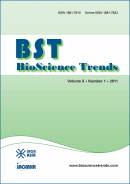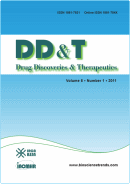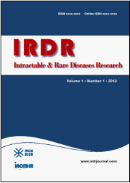Drug Discov Ther. 2025;19(4):245-252. (DOI: 10.5582/ddt.2025.01066)
Evaluation of electrospun composite biomaterial and porcine small intestine submucosa patch in open inguinal herniorrhaphy: A prospective, randomized, single-blind, controlled, multicenter, 72-month clinical study
Qiu ZY, Fang L, Li SJ, Tang JX, Pang Y, Wang J, Zhou J, Wang L, Chen L
The aim of this study was to compare postoperative complications and long-term clinical efficacy of electrospun composite biomaterial and porcine small intestine submucosa (SIS) patch in open inguinal herniorrhaphy. A prospective, randomized, single-blind, controlled, multicenter study was used to select 172 patients with inguinal hernia who met the inclusion criteria in 3 hospitals. All participants were randomly assigned (1:1) and treated by open inguinal herniorrhaphy. The experimental group used electrospun composite biomaterial patch and the control group used SIS patch. Complications were assessed by ultrasonic volume auto-scan (UVAS) at 6, 33 and 72 months after operation. The results showed that 53 cases were found to be positive by UVAS, including 20 cases of encapsulated effusion (12.74%), 11 cases of soft tissue edema (6.40%), 4 cases of recurrence (3.01%), 2 cases of testicular ischemic atrophy (1.50%), 7 cases of testicular hydrocele (5.26%), 6 cases of varicocele (4.51%), 2 cases of spermatic cord cyst (1.27%) and 1 case of epididymal head cyst (0.64%). At 33-month follow-up, 2 cases recurred in the control group (2/79, 2.53%) while none in the experimental group (0/78) (the 95% CI difference in effective rates between the two groups was -0.93% to 6.00%, within the preset non-degradation range of Δ10%). At 72-month follow-up, there were 4 cases of recurrence in the control group (4/59, 6.78%), while none in the experimental group (0/60) (the lower limit of 95% CI difference in effective rates between the two groups was 0.27% > 0). The main clinical efficacy of the experimental group was better than that of the control group. There was no statistical difference in the secondary efficacy between the two groups. The postoperative safety evaluation effect of the two groups was the same. Long-term follow-up with UVAS after operation showed that the main clinical efficacy of electrospun composite biomaterial applied in this procedure was superior to that of SIS patch, and there was no significant difference in the secondary efficacy between the two biological patches.







